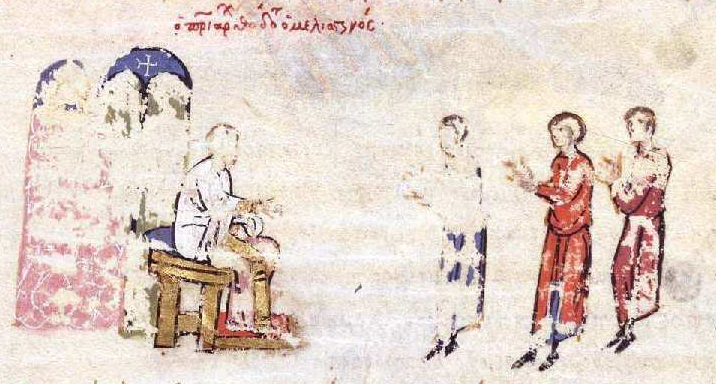Council Of Constantinople (815) on:
[Wikipedia]
[Google]
[Amazon]
 The Council of Constantinople of 815 was held in the
The Council of Constantinople of 815 was held in the
Byzantine
The Byzantine Empire, also known as the Eastern Roman Empire, was the continuation of the Roman Empire centred on Constantinople during late antiquity and the Middle Ages. Having survived the events that caused the fall of the Western Roman E ...
capital, in the Hagia Sophia
Hagia Sophia (; ; ; ; ), officially the Hagia Sophia Grand Mosque (; ), is a mosque and former Church (building), church serving as a major cultural and historical site in Istanbul, Turkey. The last of three church buildings to be successively ...
, and initiated the second period of the Byzantine Iconoclasm
The Byzantine Iconoclasm () are two periods in the history of the Byzantine Empire when the use of religious images or icons was opposed by religious and imperial authorities within the Ecumenical Patriarchate (at the time still comprising the ...
.
Background
The Ecumenical Council of Nicaea or Second Council of Nicaea (787) allowed icon veneration. However, there were monks at the Studion Monastery in Constantinople who were iconoclasts (opposed to icons).History
Shortly before it convened, the iconophile PatriarchNikephoros I
Nikephoros I (; 750 – 26 July 811), also known as Nicephorus I, was Byzantine emperor from 802 to 811. He was General Logothete (finance minister) under Empress Irene, but later overthrew her to seize the throne for himself. Prior to becomi ...
was deposed by Emperor Leo V the Armenian
Leo V the Armenian (, ''Léōn ho Arménios''; 775 – 25 December 820) was the Byzantine emperor from 813 to 820. He is chiefly remembered for ending the decade-long war with the First Bulgarian Empire, Bulgars, as well as initiating the second ...
(813-820) in favour of the iconoclast Theodotos I (patriarch from 815-821). Theodotos presided over the council, which reinstated iconoclasm, repudiating the Second Council of Nicaea
The Second Council of Nicaea is recognized as the last of the first seven ecumenical councils by the Eastern Orthodox Church and the Catholic Church. In addition, it is also recognized as such by Old Catholic Church, Old Catholics and others. ...
and reaffirming the decisions of the Council of Hieria
The Council of Hieria was a Christian council of 754 which viewed itself as ecumenical, but was later rejected by the Second Council of Nicaea (787) and by Roman Catholic and Eastern Orthodox churches, since four of the five major patriarchs ref ...
of 754. Although the meeting had been convened at the behest of the iconoclast Emperor, much of the Iconoclast effort was driven by other clerics, including the later patriarchs Antony I and John VII. In the aftermath of this synod Theodotos is represented as torturing by starvation more than one iconodule
Iconodulism (also iconoduly or iconodulia) designates the religious service to icons (kissing and honourable veneration, incense, and candlelight). The term comes from Neoclassical Greek εἰκονόδουλος (''eikonodoulos'') (from – '' ...
abbot in an attempt to force them into agreement with his ecclesiastical policy.
References
{{DEFAULTSORT:Council of Constantinople 815 Constantinople,815 Constantinople 815 Byzantine Iconoclasm 815 810s in the Byzantine Empire 815 Hagia Sophia